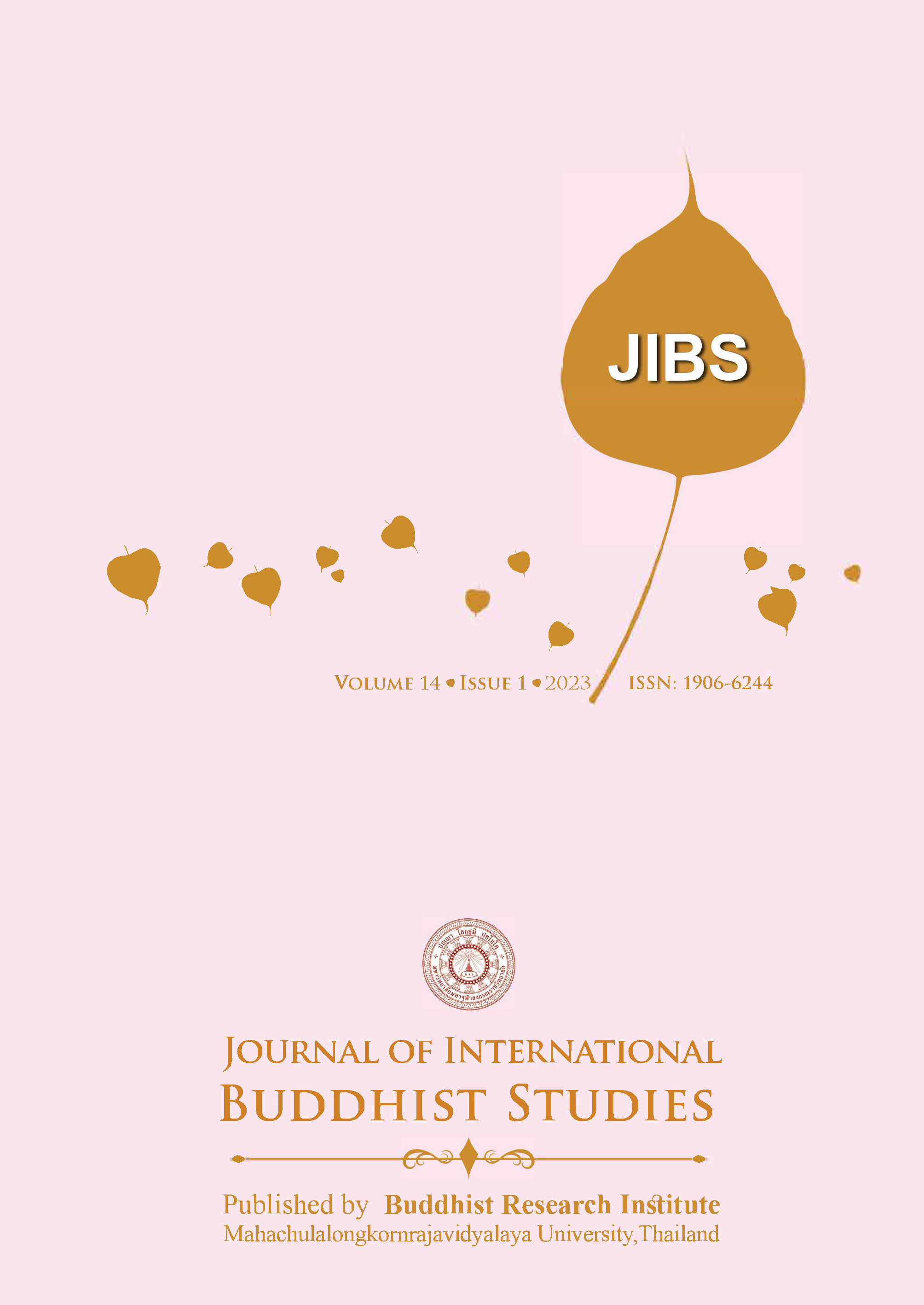Geo-Information Technology for Environmental Management of Buddhist Temples Accoding to Sappaya in Mueng Nan And Phu Phiang Districts, Nan Province
Keywords:
Buddhist Temples, Geo-Information, Technology Sappàya IndexAbstract
This study emphasizes the use of geo-information technology for environmental management of Buddhist temples according to the concept of ‘beneficial or advantageous conditions to mental development’ (Sappàya) in Mueang Nan and Phu Phiang District, Nan Province. It aims to analyze Buddhist temple layout and initiated a Buddhist Temple Sappàya Index model (BTSI) which was informed by the five supporting components for Buddhist monks’ practice of Dhamma education (Ganthadhura) and religious activities in meditation (Vipassanàdhura). The study involves the analysis of the data gathered from the Tripiṭaka, commentaries, field surveys, questionnaires, online Google Maps, vector spatial data, textbooks, documents, and very high-resolution digital imagery from WorldView-3 satellite. The obtained data are processed using Open source QGIS Version 3.22.9 Białowieża geospatial software.
The Buddhist temple layout accentuates the construction of the Buddhàvàsa area. On the Buddhàvàsa ground, 50.0 percent of temples under royal monastery and 50.0 percent of temples under community monastery have principal senàsana /buildings such as Uposatha hall, Vihàra, Chedi, drum tower/belfry, and preaching halls. Overall, three temples under royal monastery receive a high BTSI score between 94.90 to 80.30 percent. Five of temples under community monastery also have a high BTSI scores between 93.2 to 81.3 percent. In addition, forty-four temples under community monastery have a moderate BTSI, with scores range from 79.6 to 51.4 percent. Finally, forty-three temples under community monastery receive a BTSI with a score of less than 50.0 percent.
References
Bureau, Crown P. Handbook for the Maintenance and Preservation of Religious Sites. Bangkok: Crown Property Bureau, 2016.
Chang, Kang T. Introduction Geographic Information Systems. 9th edition. New York: McGraw-Hill Publishing Company Limited, 2019.
Department of Religious Affairs. History of Temples throughout the Kingdom. Bangkok: Religious Printing House, 1989.
Digital Globe. U.S.A. World View-3 Data Sheet. Accessed October 24, 2022. https://www.digitalglobe.com.
Geo-Informatics and Space Technology Development Agency. Space Technology and Geoinformatics Textbook. Bangkok: Amarin Printing Pub Co., Ltd, 2009.
Google Maps. 2022 Google Map. Accessed October 24, 2022. http://www.google.co.th/maps/dir/.
Jamornmann, Utumporn. Questionnaire: Construction and Use. 6th edition. Bangkok: Funny Publishing Limited, 2001.
Klindao, Sanjai. Spatial Management Concepts and Methodology. Bangkok: O.S. Printing House, 2012.
Lillesand, Thomas M., Ralph W. Kiefer, and John Wiley. Remote Sensing and Image Interpretation. 4th edition, New York: John Wiley & Sons, 2000.
Mahachulalongkornrajavidyalaya. Tipitaka in Thai Mahachulalongkornrajavidyalaya Edition.Bangkok: Mahachula Printing Press, 1996.
National Office of Buddhism. Buddhist Register Database. Accessed March 3, 2019. https://www.onab.go.th/th/page/item/index/id/1.
Phrabrahmagunabhorn (P.A. Payutto). Dictionary of Buddhism. 18th edition. Bangkok: Permsap Printing House, 2010.
Phrakhruphiphitthammaporn (Boontaen Srithong). “An Application of Buddha’s Style of Teaching of Moral Teaching Monks in Schools at Phichit Province.” Master’s Thesis, Mahachulalongkornrajavidyalaya University, 2013.
Phramahaphoṭhiwongsachārya (Thongdee Suratecho). Thai -Pali Dictionary. Bangkok: Phanyamit Printing Co., Ltd., 2016.
Somdetphraputhajarn (Arj Asabhummathera). Visuddhimagga. 12th edition. Bangkok: Thana Press Co., Ltd., 2017.
Suriyaphiwat, Watcharaporn. Statistics for Biological Science. Bangkok: Chulalongkorn University Press , 2009.
Thompson, Steven K. Sampling. USA: John Wiley & Sons, Inc, 1992.







